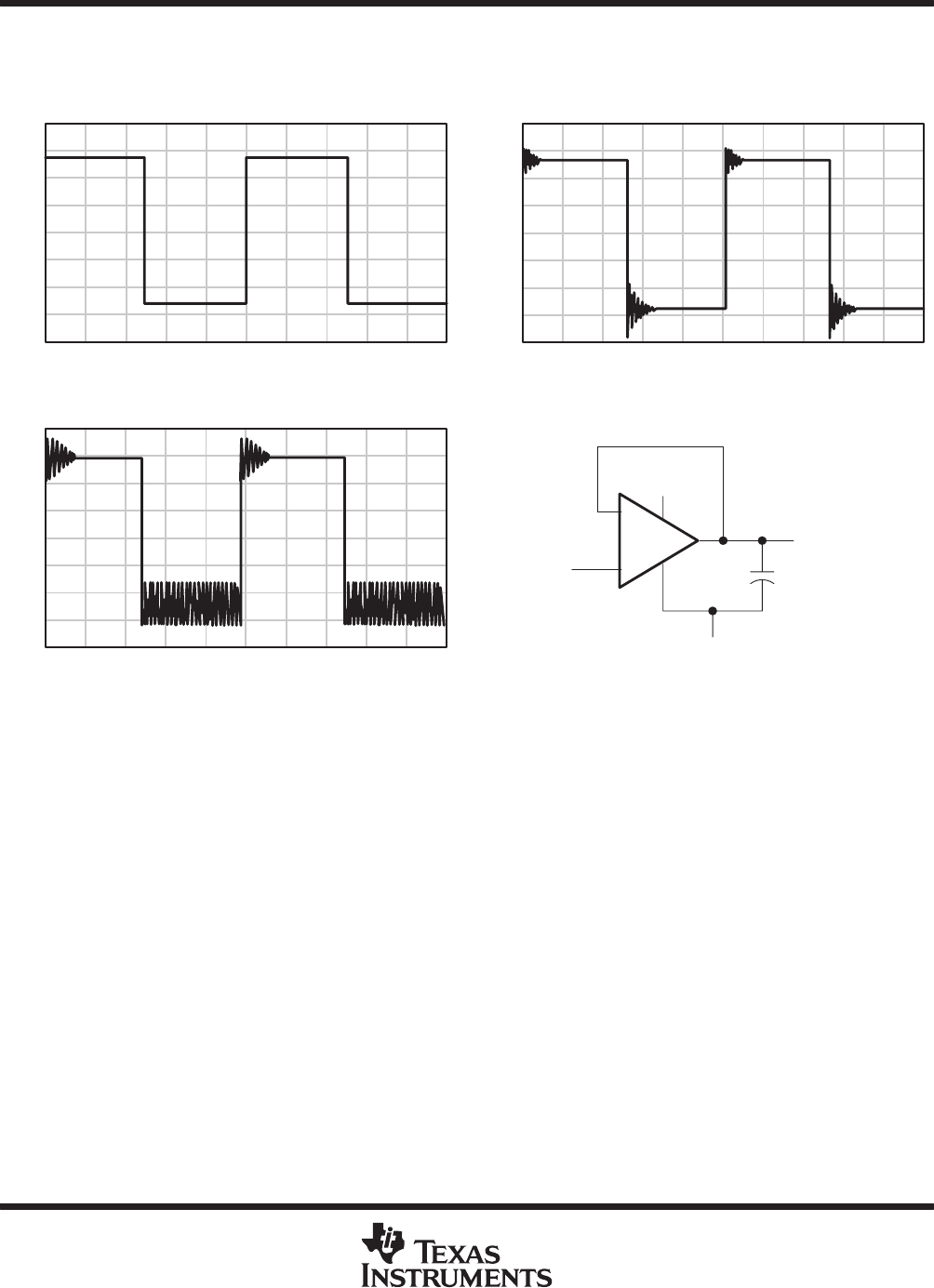Datasheet

SLOS092D − SEPTEMBER 1987 − REVISED MARCH 2001
32
POST OFFICE BOX 655303 • DALLAS, TEXAS 75265
APPLICATION INFORMATION
output characteristics (continued)
−
+
2.5 V
V
O
C
L
−2.5 V
V
I
(d) TEST CIRCUIT
T
A
= 25°C
f = 1 kHz
V
IPP
= 1 V
(a) C
L
= 20 pF, R
L
= NO LOAD (b) C
L
= 130 pF, R
L
= NO LOAD
(c) C
L
= 150 pF, R
L
= NO LOAD
Figure 41. Effect of Capacitive Loads and Test Circuit
Although the TLC274 and TLC279 possess excellent high-level output voltage and current capability, methods
for boosting this capability are available, if needed. The simplest method involves the use of a pullup resistor
(R
P
) connected from the output to the positive supply rail (see Figure 42). There are two disadvantages to the
use of this circuit. First, the NMOS pulldown transistor N4 (see equivalent schematic) must sink a comparatively
large amount of current. In this circuit, N4 behaves like a linear resistor with an on-resistance between
approximately 60 Ω and 180 Ω, depending on how hard the op amp input is driven. With very low values of R
P
,
a voltage offset from 0 V at the output occurs. Second, pullup resistor R
P
acts as a drain load to N4 and the gain
of the operational amplifier is reduced at output voltage levels where N5 is not supplying the output current.










